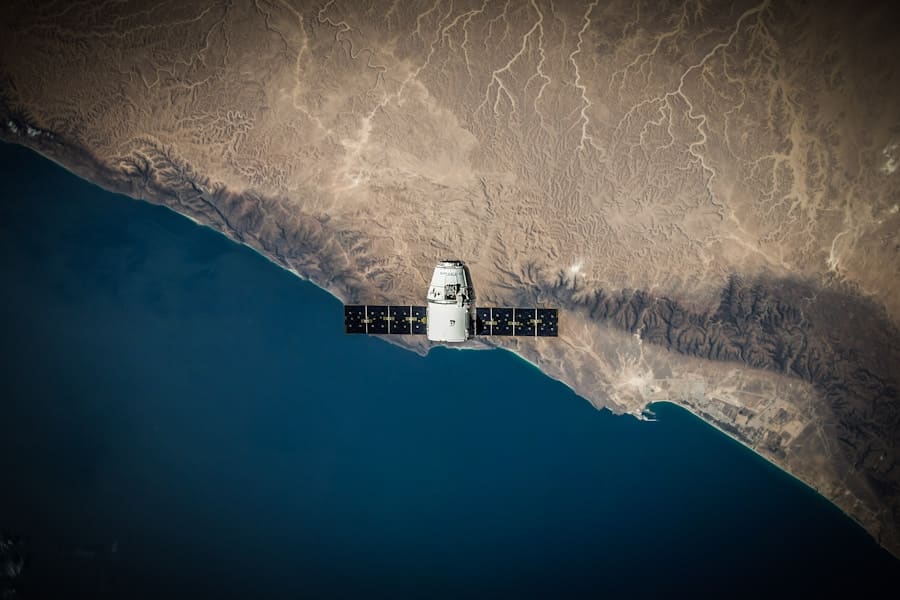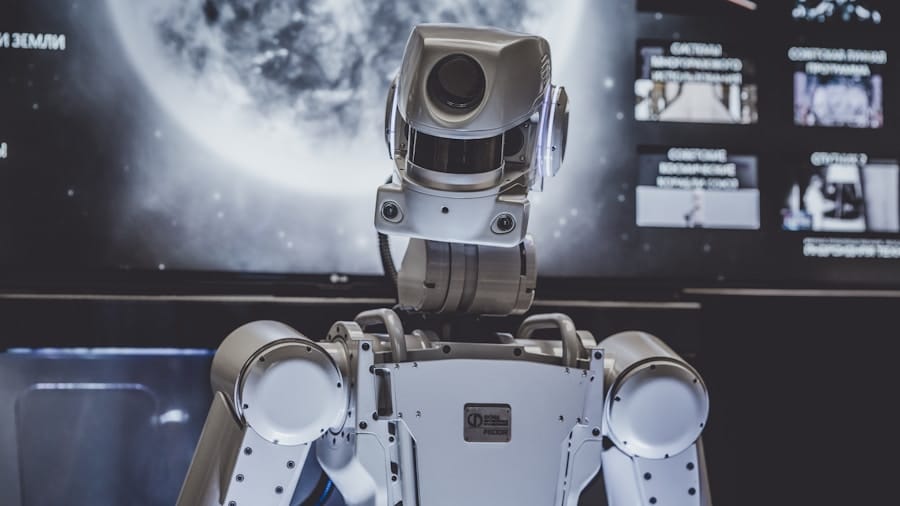The advent of artificial intelligence (AI) has revolutionized numerous fields, and space exploration is no exception. AI-driven simulations have emerged as a pivotal tool in the planning and execution of space missions, enabling scientists and engineers to model complex scenarios that would be impossible to replicate in real life. These simulations leverage vast amounts of data, advanced algorithms, and machine learning techniques to create virtual environments where various mission parameters can be tested and optimized.
As space agencies and private companies embark on increasingly ambitious missions, the integration of AI into simulation processes has become essential for enhancing mission success rates and minimizing risks. The significance of AI-driven simulations lies not only in their ability to predict outcomes but also in their capacity to adapt and learn from new data. By analyzing historical mission data, AI systems can identify patterns and correlations that human analysts might overlook.
This capability allows for a more nuanced understanding of the myriad factors that influence mission success, from spacecraft design to environmental conditions. As we delve deeper into the role of AI in space missions, it becomes clear that these simulations are not merely tools for prediction; they are integral components of a broader strategy aimed at pushing the boundaries of human exploration beyond Earth.
Key Takeaways
- AI-driven simulations play a crucial role in predicting potential challenges and ensuring the success of space missions.
- Artificial intelligence enhances the accuracy and reliability of predictions in space missions, leading to better decision-making and mission planning.
- Case studies demonstrate the successful use of AI simulations in predicting and overcoming challenges in space missions.
- The future of space mission planning will heavily rely on AI-driven simulations to improve efficiency and safety.
- Ethical considerations and limitations of AI predictions in space missions must be carefully addressed to ensure responsible and effective use of AI technology in space exploration.
The Role of Artificial Intelligence in Predicting Space Mission Success
Artificial intelligence plays a multifaceted role in predicting the success of space missions, primarily through its ability to process and analyze large datasets quickly and accurately. Traditional methods of mission planning often rely on historical data and expert intuition, which can be limited by human biases and the sheer complexity of space environments. In contrast, AI algorithms can sift through vast amounts of information—from previous mission outcomes to real-time telemetry data—allowing for a more comprehensive assessment of potential risks and opportunities.
This capability is particularly crucial in the context of deep space missions, where the stakes are high, and the margin for error is minimal.
By employing machine learning techniques, AI systems can create models that simulate various mission scenarios under different conditions.
For instance, NASA’s Jet Propulsion Laboratory has utilized AI to predict the performance of spacecraft during critical phases such as launch, orbit insertion, and landing. These models can incorporate variables such as gravitational forces, atmospheric conditions, and spacecraft dynamics, providing mission planners with insights that inform decision-making processes. The result is a more robust framework for evaluating mission feasibility and success probabilities.
How AI Simulations Are Used to Predict Potential Challenges in Space Missions
AI simulations serve as a powerful mechanism for identifying potential challenges that may arise during space missions. By creating virtual environments that mimic the complexities of space travel, these simulations allow mission planners to explore a wide range of scenarios, including equipment malfunctions, unexpected environmental conditions, and human factors. For example, during the planning stages of the Mars 2020 mission, engineers employed AI-driven simulations to assess how the Perseverance rover would perform under various Martian conditions.
This included simulating dust storms, temperature fluctuations, and terrain challenges that could impede the rover’s operations. Moreover, AI simulations can facilitate proactive problem-solving by enabling teams to test contingency plans before actual missions commence. By running simulations that incorporate potential failure modes—such as communication blackouts or power failures—mission planners can develop strategies to mitigate these risks effectively.
This approach not only enhances the resilience of missions but also fosters a culture of preparedness among teams. The ability to visualize potential challenges in a controlled environment empowers engineers and scientists to devise innovative solutions that might not have been considered otherwise.
The Accuracy and Reliability of AI-Driven Predictions in Space Missions
The accuracy and reliability of AI-driven predictions are paramount in the context of space missions, where even minor errors can lead to catastrophic outcomes. The effectiveness of these predictions hinges on the quality of the data used to train AI models and the algorithms employed in simulations. High-quality datasets that encompass a wide range of mission parameters are essential for developing robust predictive models.
For instance, NASA has invested significantly in gathering telemetry data from past missions, which serves as a foundation for training AI systems to recognize patterns and make informed predictions about future missions. However, while AI-driven predictions have shown remarkable accuracy in many cases, they are not infallible. The inherent complexity of space environments introduces uncertainties that can challenge even the most sophisticated algorithms.
Factors such as unpredictable solar activity or unforeseen mechanical failures can impact mission outcomes in ways that are difficult to anticipate. To address these challenges, researchers are continually refining their models and incorporating real-time data into simulations. This iterative process enhances the reliability of predictions by allowing AI systems to adapt to new information as it becomes available.
Case Studies: Successful Space Missions Predicted by AI Simulations
Several notable case studies illustrate the successful application of AI-driven simulations in predicting outcomes for space missions. One prominent example is NASA’s Mars Rover missions, particularly the Curiosity rover launched in 2011. Prior to its launch, engineers utilized AI simulations to model various landing scenarios on Mars’ surface.
These simulations helped identify optimal landing sites by analyzing factors such as terrain roughness and potential hazards. The successful landing of Curiosity at Gale Crater demonstrated the effectiveness of these predictive models, as the rover has since provided invaluable data about Mars’ geology and climate. Another compelling case study is the European Space Agency’s (ESA) Rosetta mission, which aimed to study comet 67P/Churyumov-Gerasimenko.
In preparation for this ambitious endeavor, ESA employed AI-driven simulations to predict the comet’s behavior as it approached the Sun. These simulations accounted for gravitational interactions with other celestial bodies and variations in the comet’s surface composition. The successful deployment of the Philae lander on the comet’s surface was a testament to the accuracy of these predictions, allowing scientists to gather unprecedented data about cometary activity.
The Future of AI-Driven AI Simulations in Space Mission Planning
As technology continues to advance, the future of AI-driven simulations in space mission planning appears promising. The integration of more sophisticated machine learning algorithms and enhanced computational power will enable even more complex simulations that can account for an expanding array of variables. For instance, future missions may leverage quantum computing capabilities to process vast datasets at unprecedented speeds, allowing for real-time adjustments during missions based on evolving conditions.
Moreover, as private companies increasingly enter the space exploration arena, there will be a growing demand for efficient mission planning tools that can optimize resources and minimize risks. AI-driven simulations will play a crucial role in this landscape by providing insights that help organizations make informed decisions about mission design and execution. Collaborative efforts between government agencies and private enterprises will likely lead to innovative applications of AI technology that push the boundaries of what is possible in space exploration.
Ethical Considerations and Limitations of AI Predictions in Space Missions
While the benefits of AI-driven predictions in space missions are substantial, ethical considerations must also be addressed. One significant concern is the potential for bias in AI algorithms, which can arise from training data that does not adequately represent all possible scenarios or outcomes. If an AI system is trained primarily on successful missions without considering failures or anomalies, it may produce overly optimistic predictions that do not account for real-world complexities.
Additionally, reliance on AI predictions raises questions about accountability and decision-making authority during missions. In situations where an AI system recommends a course of action based on its predictions, determining who is responsible for any adverse outcomes becomes complex. Establishing clear guidelines for human oversight and intervention is essential to ensure that ethical standards are upheld while harnessing the power of AI technology.
The Impact of AI-Driven AI Simulations on the Future of Space Exploration
The integration of AI-driven simulations into space exploration represents a transformative shift in how missions are planned and executed. By harnessing advanced algorithms and vast datasets, these simulations provide invaluable insights that enhance mission success rates while minimizing risks associated with space travel. As we look toward the future, it is evident that AI will continue to play an increasingly central role in shaping our understanding of the cosmos.
The ongoing evolution of AI technology promises even greater advancements in simulation capabilities, enabling scientists and engineers to explore uncharted territories with confidence. However, it is crucial to navigate the ethical considerations surrounding AI predictions thoughtfully, ensuring that human oversight remains integral to decision-making processes. As we stand on the brink of a new era in space exploration, the impact of AI-driven simulations will undoubtedly shape our journey into the unknown.
A related article discussing emerging technologies can be found on com/wired-com-focuses-on-how-emerging-technologies/’>enicomp.
com. This article delves into the latest advancements in technology and how they are shaping various industries, including space exploration. It highlights the importance of staying up-to-date with emerging technologies to ensure the success of future space missions. By leveraging AI-driven simulations and other cutting-edge tools, space agencies can better predict the outcomes of their missions and make informed decisions.
FAQs
What are AI-driven AI simulations?
AI-driven AI simulations are computer programs that use artificial intelligence (AI) to simulate and predict the outcomes of various scenarios. These simulations can be used to model complex systems and make predictions based on large amounts of data.
How are AI-driven AI simulations being used in space missions?
AI-driven AI simulations are being used in space missions to predict the success of various aspects of the mission, such as the performance of spacecraft, the behavior of celestial bodies, and the impact of environmental factors. These simulations can help mission planners make informed decisions and optimize mission outcomes.
What are the benefits of using AI-driven AI simulations in space missions?
Using AI-driven AI simulations in space missions can help reduce the risks and costs associated with space exploration. By accurately predicting the outcomes of various scenarios, mission planners can make more informed decisions and optimize mission success. Additionally, these simulations can help identify potential problems before they occur, allowing for proactive problem-solving.
How accurate are AI-driven AI simulations in predicting the success of space missions?
AI-driven AI simulations have shown to be highly accurate in predicting the success of space missions. By using large amounts of data and advanced AI algorithms, these simulations can model complex systems and make predictions with a high degree of accuracy. However, it’s important to note that simulations are based on assumptions and limitations of available data.
What are some examples of how AI-driven AI simulations have been used in space missions?
AI-driven AI simulations have been used in space missions to predict the behavior of spacecraft during re-entry, model the trajectories of celestial bodies, and simulate the impact of space weather on mission operations. These simulations have helped mission planners make critical decisions and optimize mission success.



